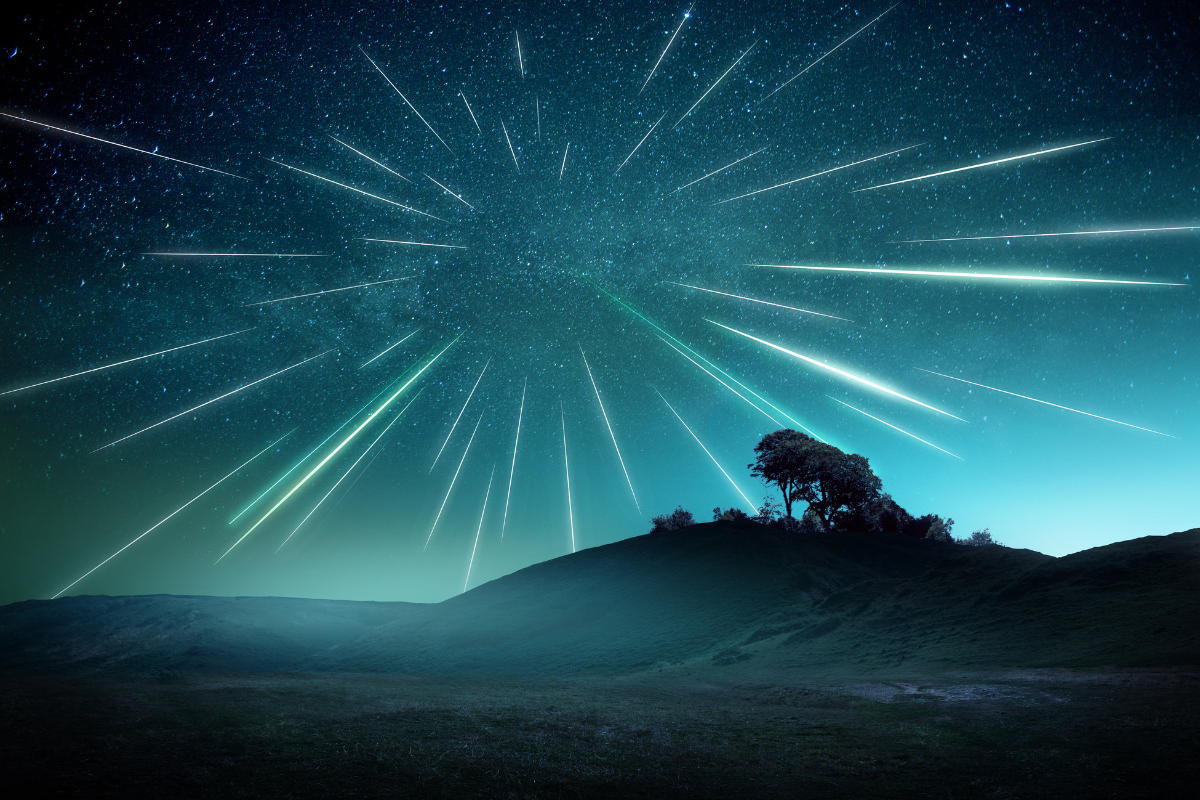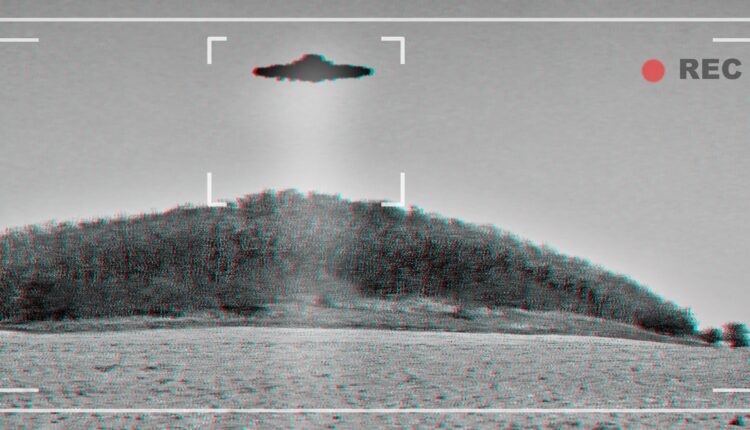
Photo courtesy of Canva
Bundle up, brave the cold, and look up at the sky
The term “celestial event” might sound like something out of a fairy tale, and honestly, it’s just as cool.
Put simply, a celestial event refers to anything that happens in space that is also visible to the naked eye. Some common examples of celestial events include:
- Phases of the moon
- Eclipses
- Solstices
- Meteor showers
- Elongation of planets
From January 2024 until the beginning of spring, Wisconsinites will experience eight such events, from a Quadrantid meteor shower to the March equinox.
Here’s a bit of information about each one, plus how to see them and where to go in Wisconsin for the best view.
January 3-4: Quadrantid Meteor Shower
The Quadrantid meteor shower is an annual celestial event that occurs when our planet passes through ice, dust, and debris from an asteroid known as 2003 EH1, which scientists believe is an extinct comet.
Unlike most meteor showers, which last for days, this one only lasts a matter of hours. So although it technically runs from mid-November through mid-January, you’ll most likely only catch it during its predicted peak, which is a narrow window of only six or so hours.
For Wisconsinites, the peak is set for around 3 a.m. Central Time on Jan. 4, which means there’s a good chance you’ll see some shooting stars—only if you’re willing to bundle up and head outside in the wee hours of the morning, that is. If not, you can probably still catch the event earlier in the evening, or even the following night.
Another pro of the 2024 Quadrantid meteor shower compared to past years is that the moon will be a 47% illuminated waning crescent in the constellation Virgo during the peak, allowing for far better viewing.
Here’s how to find it: First, head to the darkest location possible, and give your eyes half an hour or more to adjust to the darkness. When you’re ready, look toward the north to find the Big Dipper, then follow the arc of the handle to Arcturus. Keep your gaze in this region to see the brightest Quadrantids streak the night sky, as they’ll be visible to the naked eye—no telescope or fancy equipment needed.
So set your alarms and get ready for some dead-of-the-night stargazing—and don’t forget the obligatory thermos of hot chocolate.
January 11: New Moon
New moons occur when the moon is situated between the Earth and the sun, making it so the illuminated side of the moon isn’t visible to us. As a result, the moon blends in with the rest of the dark sky.
In Wisconsin, the new moon will occur at precisely 5:58 a.m. on Jan. 11, but the moon on the night prior will only be a 0.9% waning crescent, so you likely won’t be able to see it then either. Without the light reflecting off the moon, however, the stars will be extra bright that night—only if the clouds decide to dissipate, that is.
If it happens to be a clear night and you want to get your stargazing on, consider heading to one of these areas in Wisconsin, all of which have minimal light pollution:
- Newport State Park (a designated Dark Sky Park)
- Devil’s Lake State Park
- Wildcat Mountain State Park
- Big Bay State Park
- Beaver Creek Reserve
Additionally, the Huser Astronomy Center in Wyalusing State Park often hosts events where participants can use high-powered telescopes to look up at the sky and learn more about what they see.
January 12: Mercury at Greatest Western Elongation
On Jan. 12, Mercury will reach its greatest western elongation—the maximum angle between the Sun and a planet—of 23.5 degrees. According to Sea and Sky, the best time to see Mercury will be on that day just before sunrise, as it will be at its highest point above the horizon.
To find it, look toward the east and find Venus, which is easier to spot because it’s higher on the horizon and brighter. Then, the Saint Louis Science Center suggests stretching out your arm and closing one eye. Your fist should cover about 10 degrees of sky—roughly the same distance between Venus and Mercury. So once you spot Venus, you should be able to use this trick to find Mercury below it.
January 25: Wolf Moon
Full moons occur when the moon is on the opposite side of Earth as the sun, making the sphere fully illuminated. This particular full moon, which will be at its peak at 11:54 p.m. on Jan. 25 in the state’s capital, was known to early Indigenous Americans as the Wolf Moon because it happened during the time of year when packs of wolves gathered near their camps and howled.
According to the Farmer’s Almanac, alternative names for this moon include:
- Center Moon (used by the Assiniboine people)
- Freeze Up Moon (used by the Algonquin people)
- Hard Moon (used by the Dakota people)
- Frost Exploding Moon (used by the Cree people)
- Canada Goose Moon (used by the Tlingit people)
- Greetings Moon (used by the Western Abenaki people)
- Spirit Moon (used by the Ojibwe people)
February 9: New Moon
February’s new moon will happen at exactly 5 p.m. on Feb. 9. At that time, the moon will be 0% illuminated and will effectively disappear from the evening sky.
Weather permitting, this should be another excellent opportunity to stargaze. Some of the constellations to look out for include:
- Orion
- Auriga
- Camelopardalis
- Gemini
- Monoceros
February 24: Snow Moon
The second full moon of 2024 will occur at 6:31 a.m. in Wisconsin. However, it will be below the horizon at this time, so it’s best to look for it after the sun sets on Feb. 23 or 24. Early Native American tribes called this the Snow Moon, as it came around when the heaviest snowfalls blanketed the earth in the Northern Hemisphere.
Because the snow often made hunting difficult, leading to food scarcity, other tribes such as the Cherokee called this celestial event the Hunger Moon. Other names include:
- Storm Moon
- Bald Eagle Moon (used by the Cree people)
- Bear Moon (used by the Ojibwe people)
- Black Bear Moon (used by the Tlingit people)
- Raccoon Moon (used by the Dakota)
- Groundhog Moon (used by some Algonquin people)
- Goose Moon (used by the Haida)
This year, the Snow Moon is also a “micromoon” (or “apogee”) meaning the moon is at its farthest point from the Earth. You’re probably more familiar with the opposing term, “supermoon,” which happens when the moon is at its closest point to Earth. According to the Farmer’s Almanac, this micromoon will be approximately 252,225 miles from Earth.
March 10: New Moon
March 10 marks the third new moon of the year. In the state capital, the peak will happen at 5:02 a.m. that day.
According to LUNAF’s lunar calendar, there will be a high ocean tide on this date due to the strong combined force of the sun and moon’s gravitational pull and the sun-moon-Earth syzygy alignment.
March 20: March Equinox
An equinox is a celestial event that occurs when a plant’s subsolar point passes through its equator. Here on Earth, there are only two equinoxes every year, and the first one of 2024 will happen on March 20. In the Northern Hemisphere, it’s referred to as the vernal equinox, spring equinox, or simply the March equinox, while in the Southern Hemisphere, it’s the opposite (aka the autumnal equinox).
In Wisconsin, the sun’s rays will shine directly above the equator at around 10:06 p.m. Around this time, night and day are about the same length around the world, which is how this celestial event earned its name; “equinox” means “equal night” in Latin. After the March equinox, many places will have more daylight than darkness.
In terms of astronomy, this event also marks the official start of spring for those of us in the Northern Hemisphere. The end of Wisconsin’s cold and dreary winter deserves a celebration, so why not take a cue from cultures around the world and plan a festive gathering with friends and family?
Alternatively, you might want to try out a special themed ritual, such as planting seeds, spring cleaning, setting intentions, getting outside, or having a bonfire.
Politics

Here’s what you need to know about medical debt in Wisconsin
Medical debt—a financial burden for tens of millions of Americans facing hundreds of billions of dollars in health care costs—affects everyone,...

Voucher schools are getting more funding than ever. What does that mean for Wisconsin public schools?
A massive funding increase for Wisconsin's voucher schools in 2023 has led to a growth in private schools getting taxpayer dollars—with a total...
Local News

The 8 most convincing UFO sightings in Wisconsin history
If you’ve ever seen something light up in the sky and wondered what it could be, there’s a chance it’s a UFO, especially if you’re in Wisconsin. The...

What’s the best budget-friendly destination in Wisconsin?
From the shores of Lake Michigan to the rustic beauty of the Northwoods, Wisconsin is teeming with unforgettable destinations where you can relax,...



